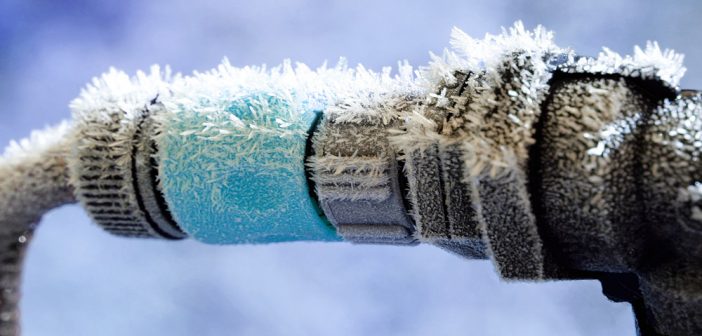Plumbing problems can be costly and time-consuming if they are not caught early. Fortunately, many expensive repairs can be avoided by completing routine maintenance on your plumbing system. However, one issue that must be dealt with quickly in order to avoid costly repair bills is frozen pipes. Here are some essential facts about how to approach this problem should it arise.
During frigid winter temperatures, frozen water pipes are a serious concern for most homeowners. When water freezes inside a pipe, it can create pressure equaling 2000 pounds per square inch. The water expands beyond the pipe’s ability to contain it and subsequently bursts the pipe. In a matter of hours, a ruptured pipe can spill hundreds of gallons of water into the surrounding area. This can lead to thousands of dollars of damage to your dwelling.
Areas where Pipes might Freeze
• Under a sink or in a cabinet
• In the basement
• Unheated crawlspaces
• In an outside wall
Frozen pipes that have not yet ruptured must be thawed immediately. Depending on the location of the frozen pipe, there are several thawing techniques you may wish to try.
Open Faucets
Before attempting to thaw frozen pipes, you must open the faucet into which the pipe feeds. Keep in mind that both the cold and hot handles must be opened. This helps relieve system pressure and allows water to flow after the pipe begins to thaw.
Location
Begin thawing pipes as close to the faucets as possible, gradually working your way to the frozen area. This ensures that there is an open faucet which steam and melting ice can escape. If you begin the thawing process too close to the frozen area, you increase the odds of the pipe bursting. This is because the melting ice may become lodged in back of the blockage, which can create additional pressure within the pipes.
Here are some ways to apply heat to thaw exposed pipes:
Wrap a Hot Towels around the Pipe
Soak hot towels in water and tightly wrap them around the area of the pipe where the blockage is. Even though this technique is not particularly fast, it is effective and can be implemented by anyone.
Hair Dryer
Another easy way to thaw a pipe is to use an electric hairdryer. Simply plug the dryer in and point it at the frozen pipe (beginning at the section of the pipe that is nearest to the faucets.) Remember, when operating an electrical device, avoid accidental contact with water.
Portable Space Heater or Heat Lamp
Use a portable space heater or a heat lamp to thaw frozen pipes. Position the portable device so enough heat can reach the area of pipe that is frozen. Be sure to use the appliance correctly and keep it away from water.
Electrical Heating Tape
Electrical heating tape is a quick and easy way to begin thawing out frozen pipes. The electrical heating tape is applied directly to the pipe, where it distributes heat. Electrical heating tape that shuts off on its own can be found in most hardware stores, but you can also buy tape that can be plugged and unplugged as desired.
Best Ways to Thaw Enclosed Pipes
Turn up the Heat
The easiest way to thaw enclosed pipes is to simply turn up the heat in your dwelling. In some cases, this is all you need to do so frozen pipes can thaw out.
Use an Infrared Lamp
If you can pinpoint the area in the wall where the frozen pipe is situated, position an infrared lamp in front of that section of the wall. The lamp’s heat can penetrate and defrost the pipe.
Cut Out a Specific Area of the Wall
Carefully cut out a specific area of the drywall that covers the frozen pipe. This makes the pipe easily accessible to thaw the pipe.
Safety Considerations
Never use an open flame such as a blowtorch to thaw a pipe. This technique presents a serious fire hazard and it can severely damage the pipe.
When to Seek the Advice of a Plumber
Certain repairs can be completed on your own without professional help. However, some tasks require the advice of an expert. If you have a frozen pipe that has ruptured, turn off the water and contact a professional as soon as possible. Do not try to repair any part of your plumbing system if you are not familiar, this can lead to costly mistakes and additional repairs. Contact a professional contractor for complicated repairs to ensure your plumbing system remains strong and efficient for many future years.









